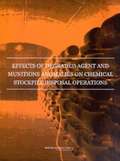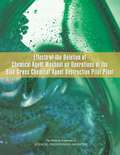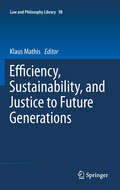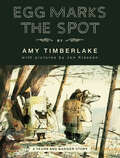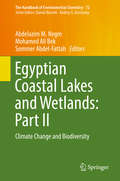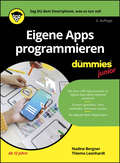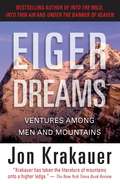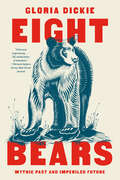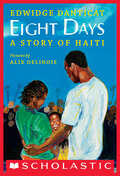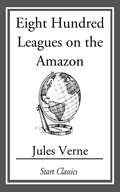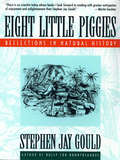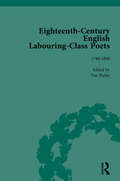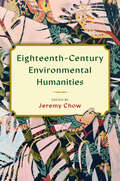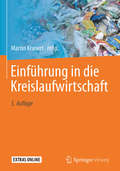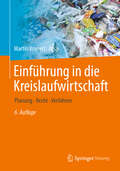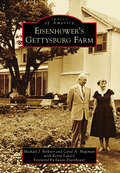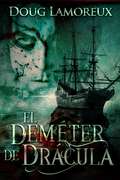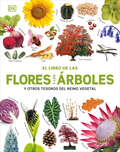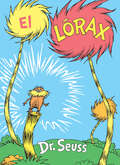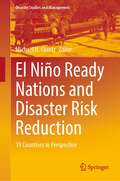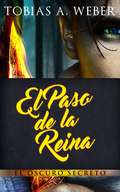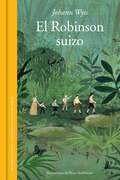- Table View
- List View
Effects Of Degraded Agent And Munitions Anomalies On Chemical Stockpile Disposal Operations
by Committee on Review Evaluation of the Army Chemical Stockpile Disposal ProgramThe U.S. Army is in the process of destroying its entire stock of chemical weapons. To help with stockpile disposal, the Army’s Chemical Stockpile Disposal Program (CSDP), in 1987, asked the National Research Council (NRC) for scientific and technical advice. This report is one in a series of such prepared by the NRC over the last 16 years in response to that request. It presents an examination of the effect of leaking munitions (leakers) and other anomalies in the stored stockpile on the operation of the chemical agent disposal facilities. The report presents a discussion of potential causes of these anomalies, leaker tracking and analysis issues, risk implications of anomalies, and recommendations for monitoring and containing these anomalies during the remaining life of the stockpile.
Effects of the Deletion of Chemical Agent Washout on Operations at the Blue Grass Chemical Agent Destruction Pilot Plant
by Engineering Medicine National Academies of SciencesThe United States manufactured significant quantities of chemical weapons during the Cold War and the years prior. Because the chemical weapons are aging, storage constitutes an ongoing risk to the facility workforces and to the communities nearby. In addition, the Chemical Weapons Convention treaty stipulates that the chemical weapons be destroyed. The United States has destroyed approximately 90 percent of the chemical weapons stockpile located at seven sites. As part of the effort to destroy its remaining stockpile, the Department of Defense is building the Blue Grass Chemical Agent Destruction Pilot Plant (BGCAPP) on the Blue Grass Army Depot (BGAD), near Richmond, Kentucky. The stockpile stored at BGAD consists of rockets and projectiles containing the nerve agents GB and VX and the blister agent mustard. Continued storage poses a risk to the BGAD workforce and the surrounding community because these munitions are several decades old and are developing leaks. Due to public opposition to the use of incineration to destroy the BGAD stockpile, Congress mandated that non- incineration technologies be identified for use at BGCAPP. As a result, the original BGCAPP design called for munitions to be drained of agent and then for the munition bodies to be washed out using high-pressure hot water. However as part of a larger package of modifications called Engineering Change Proposal 87 (ECP-87), the munition washout step was eliminated. Effects of the Deletion of Chemical Agent Washout on Operations at the Blue Grass Chemical Agent Destruction Pilot Plant examines the impacts of this design change on operations at BGCAPP and makes recommendations to guide future decision making.
Efficiency, Sustainability, and Justice to Future Generations
by Klaus MathisFifty years after the famous essay "The Problem of Social Cost" (1960) by the Nobel laureate Ronald Coase, Law and Economics seems to have become the lingua franca of American jurisprudence, and although its influence on European jurisprudence is only moderate by comparison, it has also gained popularity in Europe. A highly influential publication of a different nature was the Brundtland Report (1987), which extended the concept of sustainability from forestry to the whole of the economy and society. According to this report, development is sustainable when it "meets the needs of the present without compromising the ability of future generations to meet their own needs". A key requirement of sustainable development is justice to future generations. It is still a matter of fact that the law as well as the theories of justice are generally restricted to the resolution of conflicts between contemporaries and between people living in the same country. This in turn raises a number of questions: what is the philosophical justification for intergenerational justice? What bearing does sustainability have on the efficiency principle? How do we put a policy of sustainability into practice, and what is the role of the law in doing so? The present volume is devoted to these questions. In Part One, "Law and Economics", the role of economic analysis and efficiency in law is examined more closely. Part Two, "Law and Sustainability", engages with the themes of sustainable development and justice to future generations. Finally, Part Three, "Law, Economics and Sustainability", addresses the interrelationships between the different aspects.
Egg Marks the Spot: A Skunk and Badger Story (Skunk and Badger #2)
by Amy TimberlakeIndie Bestseller * Amazon Top 20 Children's Book * Amazon Best Children's Book * Shelf Awareness Best Children's Book * Chicago Public Library Best BookIn the follow-up to the acclaimed and bestselling best book of the year by Newbery Honoree Amy Timberlake with pictures from Caldecott medalist Jon Klassen, Skunk and Badger head out on a rock-finding expedition with surprises hiding behind every boulder. Buried in the heart of every animal is a secret treasure. For rock scientist Badger, it&’s the Spider Eye Agate he found as a cub, stolen years ago by his crafty cousin, Fisher. For Badger&’s roommate, Skunk, the treasure is Sundays with the New Yak Times Book Review. When an old acquaintance, Mr. G. Hedgehog, announces his plan to come for the Book Review as soon as it thumps on the doorstep, Skunk decides an adventure will solve Badger&’s problems as well as his own. Surprisingly, Badger agrees. Together they set off on an agate-finding expedition at Badger&’s favorite spot on Endless Lake. But all is not as it seems at Campsite #5. Fisher appears unexpectedly. Then a chicken arrives who seems intent on staying. Something is up! Secrets, betrayals, lies. . . and a luminous, late-Jurassic prize. Newbery Honor author Amy Timberlake spins the second tale in this series about two opposites who became friends, alongside the lush art of New York Times bestselling author-illustrator and Caldecott Medalist Jon Klassen.Don't miss Skunk and Badger's other adventures in:Skunk and Badger Rock Paper Incisors (Coming October 2025)
Egyptian Coastal Lakes and Wetlands: Climate Change and Biodiversity (The Handbook of Environmental Chemistry #72)
by Abdelazim M. Negm Mohamed Ali Bek Sommer Abdel-FattahThis volume investigates the challenges facing the Egyptian Northern coastal lakes, focusing on the impact of climate change, their biodiversity and sustainable management. Presenting up-to-date research, it covers the following topics: climate change and water quality modeling and their impacts on the sustainability of the lakes; the economic role of the lakes; the use of remote sensing in monitoring; and the biodiversity of the lakes with detailed discussions. Further, management strategies for the sustainable development of these valuable resources are proposed to maintain the lakes sustainability. The book closes with a concise summary of the conclusions and recommendations presented in the preceding chapters. As such, it offers an invaluable resource for the academic community and postgraduate students, as well as for environmental managers and policymakers.
Eigene Apps programmieren für Dummies Junior (Für Dummies)
by Nadine Bergner Thiemo LeonhardtSchritt für Schritt die erste App programmieren Hast du Lust, eine eigene App für dein Android-Smartphone zu programmieren? In diesem Buch erfährst du, wie das mit dem kostenlosen App Inventor ganz einfach geht. Am Beispiel einer ersten Mini-App lernst du den Unterschied zwischen Design und Funktion kennen. Nach und nach findest du mithilfe des Buches heraus, wie du die vielen Sensoren des Smartphones ansprechen oder wie du Stadtpläne in Apps einsetzen kannst. Ganz nebenher lernst du auch ein bisschen Englisch, denn der App Inventor kommt aus Amerika. Deine eigene App kannst du dann tatsächlich auf deinem Smartphone (Android oder Apple) oder auf einem Simulator laufen lassen. Du lernst Wie du Bilder in deine Apps einfügst und Töne von deinen Apps abspielen lässt Welche Sensoren du nutzen kannst Wie du deine Apps komfortabler und interessanter machst Wie du deine App per Passwort schützt
Eiger Dreams: Ventures Among Men And Mountains
by Jon KrakauerNo one writes about mountaineering and its attendant victories and hardships more brilliantly than Jon Krakauer. In this collection of his finest essays and reporting, Krakauer writes of mountains from the memorable perspective of one who has himself struggled with solo madness to scale Alaska's notorious Devils Thumb. In Pakistan, the fearsome K2 kills thirteen of the world's most experienced mountain climbers in one horrific summer. In Valdez, Alaska, two men scale a frozen waterfall over a four-hundred-foot drop. In France, a hip international crowd of rock climbers, bungee jumpers, and paragliders figure out new ways to risk their lives on the towering peaks of Mont Blanc. Why do they do it? How do they do it? In this extraordinary book, Krakauer presents an unusual fraternity of daredevils, athletes, and misfits stretching the limits of the possible. From the paranoid confines of a snowbound tent, to the thunderous, suffocating terror of a white-out on Mount McKinley, Eiger Dreams spins tales of driven lives, sudden deaths, and incredible victories. This is a stirring, vivid book about one of the most compelling and dangerous of all human pursuits.
Eight Bears: Mythic Past And Imperiled Future
by Gloria DickieA Best Book of the Year in The New Yorker, Economist, and Science News A Scientific American Best Staff Read Shortlisted for the Banff Centre Mountain Book Awards "Vivid and engrossing.… [A] celebration of beardom." —Richard Adams Carey, Wall Street Journal A global exploration of the eight remaining species of bears—and the dangers they face. Bears have always held a central place in our collective memory, from Indigenous folklore and Greek mythology to nineteenth-century fairytales and the modern toy shop. But as humans and bears come into ever-closer contact, our relationship nears a tipping point. Today, most of the eight remaining bear species are threatened with extinction. Some, such as the panda bear and the polar bear, are icons of the natural world; others, such as the spectacled bear and the sloth bear, are far less known. In Eight Bears, journalist Gloria Dickie embarks on a globe-trotting journey to explore each bear’s story, whisking readers from the cloud forests of the Andes to the ice floes of the Arctic; from the jungles of India to the backwoods of the Rocky Mountain West. She meets with key figures on the frontlines of modern conservation efforts—the head of a rescue center for sun and moon bears freed from bile farms, a biologist known as Papa Panda, who has led China’s panda-breeding efforts for almost four decades, a conservationist retraining a military radar system to detect and track polar bears near towns—to reveal the unparalleled challenges bears face as they contend with a rapidly changing climate and encroaching human populations. Weaving together ecology, history, mythology, and a captivating account of her travels and observations, Dickie offers a closer look at our volatile relationship with these magnificent mammals. Engrossing and deeply reported, Eight Bears delivers a clear warning for what we risk losing if we don’t learn to live alongside the animals that have shaped our cultures, geographies, and stories.
Eight Days: A Story of Haiti
by Edwidge Danticat“Composed in the wake of the devastating earthquake of January 2010, this inspired child’s-eye view will leave no reader or listener unmoved.” —Kirkus Reviews (starred review)From the New York Times-bestselling author and National Book Award finalist comes a brilliantly crafted story of hope and imagination—a powerful tribute to Haiti and children around the world . . . While Junior is trapped for 8 days beneath his collapsed house after an earthquake, he uses his imagination for comfort. Drawing on beautiful, everyday-life memories, Junior paints a sparkling picture of Haiti for each of those days—flying kites with his best friend or racing his sister around St. Marc’s Square—helping him through the tragedy until he is finally rescued.Love and hope dance across each page—granting us a way to talk about resilience as a family, a classroom, or a friend.“An uplifting story, told in the ingenuous voice of Junior, a boy pulled from the rubble of his former home eight days after the earthquake that devastated Port-au-Prince in January 2010 . . . a moving celebration of hope, determination, and resilience.” —Publishers Weekly“Focusing on one child who survived the 2010 disaster in Haiti, this beautiful and touching picture book is a true testament to the spirit of the people of this nation.” —School Library Journal“Their moving storytelling personalizes the dramatic news stories of the disaster with a close-up, fictionalized narrative of one child’s experience.” —Booklist
Eight Hundred Leagues On The Amazon
by Jules VerneEight Hundred Leagues on the Amazon (French: La Jangada - Huit Cents lieues sur l'Amazone) is a novel by Jules Verne, published in 1881. Unlike many of his other novels, this story does not have any science fiction elements. It is an adventure novel. This novel involves how Joam Garral, a ranch owner who lives near the Peruvian-Brazilian border on the Amazon River, is forced to travel down-stream when his past catches up with him. Most of the novel is situated on a large jangada (a Brazilian timber raft) that is used by Garral and his family to float to Belém at the river's mouth. Many aspects of the raft, scenery, and journey are described in detail.
Eight Little Piggies: Reflections in Natural History
by Stephen Jay Gould"There is no scientist today whose books I look forward to reading with greater anticipation of enjoyment and enlightenment than Stephen Jay Gould."--Martin Gardner Among scientists who write, no one illuminates as well as Stephen Jay Gould doesthe wonderful workings of the natural world. Now in a new volume of collected essays--his sixth since Ever Since Darwin--Gould speaks of the importance of unbroken connections within our own lives and to our ancestralgenerations. Along with way, he opens to us the mysteries of fish tails, frog calls, and other matters, and shows once and for all why we must take notice when a seemingly insignificant creature is threatened, like the land snail Partula from Moorea, whose extinction he movingly relates.
Eighteenth-Century English Labouring-Class Poets, vol 3
by John Goodridge Simon Kövesi David Fairer Tim Burke William ChristmasPoets of labouring class origin were published in Britain in the 18th and 19th centuries. Some were popular and important in their day but few are available today. This is a collection of some of those poems from the 18th century.
Eighteenth-Century Environmental Humanities (Transits: Literature, Thought & Culture, 1650-1850)
by Shelby Johnson Jeremy Chow Elliot Patsoura Annette Hulbert Adam Sweeting Mariah Crilley Claire Campbell Jason Payton Matt Duquès Ami Yoon Christopher Allan Black Kate ScarthThis groundbreaking new volume unites eighteenth-century studies and the environmental humanities, showcasing how these fields can vibrantly benefit one another. In eleven chapters that engage a variety of eighteenth-century texts, contributors explore timely themes and topics such as climate change, new materialisms, the blue humanities, indigeneity and decoloniality, and green utopianism. Additionally, each chapter reflects on pedagogical concerns, asking: How do we teach eighteenth-century environmental humanities? With particular attention to the voices of early-career scholars who bring cutting-edge perspectives, these essays highlight vital and innovative trends that can enrich both disciplines, making them essential for classroom use.
Einführung in die Kreislaufwirtschaft: Planung -- Recht -- Verfahren
by Martin KranertDie f#65533;nfte Auflage dieses Buches liefert einen #65533;berblick #65533;ber den neuesten Stand zu Ressourcen- und Klimaschutz durch Kreislaufwirtschaft und zur Verwertung von Altprodukten und Altstoffen (inkl. Papier, LVP, Glas, Metall, RDF, Elektronikschrott und seltene Metalle). Schredder und Zerkleinerungstechnik werden im Kapitel Aufbereitung fester Abfallstoffe besprochen. Am Ende eines jeden Kapitels befinden sich zahlreiche Kontroll- und #65533;bungsaufgaben. Enthalten sind weiterhin aktuelle Entwicklungen, unter anderem aus der Abfallwirtschaftlichen Planung, des Umweltmanagements und der betrieblichen Abfallwirtschaft. Ein umfassendes Glossar mit Erl#65533;uterungen zu den Fachbegriffen sowie erg#65533;nzende Tabellen runden dieses Buch ab. Unter Mitwirkung von kompetenten Fachleuten und Experten, die in Lehre und Forschung auf dem Gebiet der Abfallwirtschaft t#65533;tig sind, wurde die 5. Auflage den aktuellen Entwicklungen angepasst.
Einführung in die Kreislaufwirtschaft: Planung · Recht · Verfahren
by Martin Faulstich Paul Laufs Martin Kranert Gerhard Rettenberger Sabine Flamme Hans-Dieter Huber Klaus Fischer Mechthild Baron Andreas Behnsen Werner Bidlingmaier Carla Cimatoribus Detlef Clauß Heinz-Josef Dornbusch Katherina Eckstein Nicolas Escalante Alexander Feil Anna Fritzsche Bernhard Gallenkemper Gerold Hafner Kai Hillebrecht Julia Hobohm Kerstin Kuchta Thomas Pretz Martin Reiser Manfred Santjer Jan Henning Seelig Helmut Seifert Erwin Thomanetz Jürgen Vehlow Torsten ZellerDieses Lehrbuch zur Kreislaufwirtschaft (in den Vorauflagen unter dem Titel Einführung in die Abfallwirtschaft erschienen) bietet eine Einführung und Vertiefung für alle studienrelevanten Inhalte zur Kreislaufwirtschaft. Unter Mitwirkung von kompetenten Fachleuten und Experten, die in Lehre und Forschung auf dem Gebiet der Kreislauf- und Abfallwirtschaft tätig sind, berücksichtigt die 6. Auflage die aktuellen technischen und gesetzlichen Entwicklungen, aber auch die Anforderungen an Abfallwirtschaftsbetriebe, Kommunikation an Konsumenten und ökonomische Aspekte. Zahlreiche Abbildungen helfen dabei, das Themengebiet der Kreislaufwirtschaft besser zu verstehen. Am Ende eines jeden Kapitels unterstützen die bewährten Kontroll- und Übungsaufgaben das Lernen. Ein umfassendes Glossar mit Erläuterungen zu den Fachbegriffen sowie ergänzende Tabellen runden dieses Buch ab.
Eisenhower’s Gettysburg Farm (Images of America)
by Michael J. Birkner Carol A. Lavery Foreword By EisenhowerThe Eisenhower farm was the first and only home that Dwight Eisenhower and his wife, Mamie, called their own. During Eisenhower’s military career, he and Mamie lived around the world, but he always hoped to own a piece of property and leave it better than he found it. That wish led to the purchase of the Allen Redding farm in 1950 and the Eisenhowers’ thorough renovation of its dwelling. During Eisenhower’s presidency, the farm served as a retreat from the Washington pressure cooker. When his presidential term ended, the Eisenhowers embraced a new chapter in their lives together. Eisenhower maintained an active schedule of writing, speechmaking, correspondence, and meetings with a wide range of national and world leaders, as well as supervision of an active farm operation. Mamie and Dwight shared a busy social life in retirement, taking special pleasure in spending time with their son John, daughter-in-law Barbara, and four grandchildren. This book tells the Eisenhowers’ Gettysburg story.
El Deméter de Drácula
by Doug Lamoreux Andrea LorcaEn su clásica obra «Drácula», Bram Stoker, mediante unas pocas entradas crípticas en un diario de un capitán anónimo, ofrecía algunas pistas sobre el viaje que llevó al vampiro rey desde su tierra natal a un Londres rio en sangre. Ahora, se cuenta toda la historia. Julio de 1897. La goleta Deméter zarpa desde Varna llevando cincuenta cajas llenas de tierra. Un mes después, en medio de una intensa tormenta, la goleta toca tierra en Whitby. El único ser vivo a bordo es un enorme perro que desaparece en la noche. Acompañe a Doug Lamoreux, nominado a un galardón Rondo en 2010 y autor de The Devil’s Bed para una apasionante mezcla de aventura marina, romance y terror. Suba a bordo del Deméter de Drácula.
El Libro de las flores y los árboles (DK Our World in Pictures)
by DKEmprende un emocionante viaje por las maravillas del reino de las plantas a través de más de 1000 imágenes y aprende un montón de datos fascinantes. ¿Qué plantas comen insectos? ¿Cómo almacenan agua los cáctus? ¿Qué flor se parece a una abeja? ¿Dónde está el árbol más alto del mundo? Los niños encontrarán las respuestas a estas y muchas más preguntas sobre la naturaleza en El libro de las flores y los árboles, ¡un increíble recorrido por el misterioso mundo de los árboles, las flores, las hojas y las semillas!Este libro de plantas para niños, incluye:Toda la información sobre la vida de las plantas, como los hábitats en los que crecen o los alimentos que nos proporcionan.Fotografías e imágenes desde diferentes perspectivas de cada tipo de planta (árboles, hierbas, plantas con flores).Lenguaje sencillo y fácil de entender para niños y niñas en edades comprendidas entre los 7 y 12 años.Especies de plantas peculiares, desconocidas y muy divertidas: árboles con frutos tan grandes como el dedo de un gigante, orquídeas que parecen caras de mono, semillas que giran como helicópteros ¡y árboles que gotean veneno!Desde las semillas más pequeñas y los árboles más altos hasta flores extrañas, malolientes y mortíferas, ¡apréndelo todo sobre el reino vegetal y diviértete leyendo este libro de plantas para niños con tus hijos! El regalo perfecto para pequeños lectores que sienten curiosidad por aprender sobre ciencia y naturaleza.---------------------------Packed with more than 1,000 incredible images and fascinating facts, this beautiful children's book takes you on an exciting expedition through the wonders of the plant kingdom.Explore the incredible world of plants, from the smallest seeds to the tallest trees. Find out about the weirdest, smelliest, and deadliest flowers. Which plants eat insects? How do cacti store water? What flower looks like a bee? Where is the tallest tree in the world? Trees, Leaves, Flowers & Seeds explores the mysterious world of plants to find the answers to these and many more questions in Our World in Pictures: Trees, Leaves, Flowers and Seeds. Each type of plant - such as a flowering plant, a tree, a grass, or a cactus - is examined close-up, with examples shown from all angles and cross-sections. Picture-filled galleries also show the wonderful variety of plants on different themes, from the habitats they grow to the plants that supply us with our staple foods. But Trees, Leaves, Flowers & Seeds also takes a fun, more sideways look at some extraordinary plants, such as trees with fruits like a giant's fingers, orchids that look like monkey faces, seeds that spin like helicopters, and trees that drip poison.So open this fantastic book and learn more about the world of trees, leaves, flowers, and seeds.
El Lórax (Classic Seuss)
by Dr. Seuss¡Edición en español y rimada del famoso clásico de Dr. Seuss sobre la protección del medio ambiente! Mucho antes del triunfo de la corriente «ser verdes», Dr. Seuss habló en nombre de los árboles y nos advirtió del peligro de no ser respetuosos con el medio ambiente. En esta excelente traducción rimada (impresa en papel reciclado), conocemos a Fuena-Vez y cómo la tala de los áboles Trúfula cambió para siempre el paisaje. Regalo ideal para los pequeños guardianes ecologistas y admiradores de Dr. Seuss, El Lórax no solo nos muestra la belleza del mundo que nos rodea, sino que también nos enseña que es responsabilidad nuestra protegerlo. Las ediciones rimadas, en español, de los clásicos de Dr. Seuss, publicadas por Random House, brindan la maravillosa oportunidad de disfrutar de sus historias a más de treinta y ocho millones de personas hispanohablantes en Estados Unidos. A rhymed, Spanish translation of Dr. Seuss's beloved classic about protecting the environment!Long before "going green" was mainstream, Dr. Seuss's Lorax spoke for the trees and warned of the dangers of disrespecting the environment. In this excellent, rhymed translation (printed on recycled paper), we learn of the Once-ler and how his harvesting of the tufted Truffala Trees changed the landscape forever. A perfect gift for young Dr. Seuss fans and budding environmentalists, The Lorax shows not only the importance of seeing the beauty in the world around us, but also our responsibility to protect it.Random House's rhymed, Spanish-language editions of classic Dr. Seuss books make the joyful experience of reading Dr. Seuss books available for the more than 38 million people in the United States who speak Spanish.
El Niño Ready Nations and Disaster Risk Reduction: 19 Countries in Perspective (Disaster Studies and Management)
by Michael H. GlantzEl Niño can have drastic effects on livelihoods in affected regions. As the climate changes, there will also be changes in El Nino behavior and therefor in its impacts around the globe on human activities such as agriculture, water resources and weather extremes. The country-specific studies covered in this book are undertaken by experts on climate, water and weather-related fields in the countries being studied. Furthermore, aspects from other disciplines, for example from social sciences have been drawn upon in order to cover crosscutting themes which are identified: depicting similarities and differences in responses to El Nino's impacts such as drought, floods, famines, health-related issues and the like.
El Niño in World History (Palgrave Studies in World Environmental History)
by George Adamson Richard GroveThis book examines the role of the El Niño Southern Oscillation (ENSO) in society. Throughout human history, large or recurrent El Niños could cause significant disruption to societies and in some cases even contribute to political change. Yet it is only now that we are coming to appreciate the significance of the phenomenon. In this volume, Richard Grove and George Adamson chart the dual history of El Niño: as a global phenomenon capable of devastating weather extremes and, since the 18th century, as a developing idea in science and society. The chapters trace El Niño’s position in world history from its role in the revolution in Australian Aboriginal Culture at 5,000 BP to the 2015-16 ‘Godzilla’ event. It ends with a discussion of El Niño in the current media, which is as much a product of the public imagination as it is a natural process.
El Paso de la Reina - El Oscuro Secreto
by Tobias A. WeberTodos pensaban que los Inmortales habían destruído a los Magos años atrás, pero esto parecía ser una desilución mortal. No siendo los únicos en querer destruir el Reino de Ver El mismo día que la magia regresa al mundo, un vieje enemigo aparece. Con el mundo en caída hacia el caos, los paladines Bren y Laris son enviados en una misión para traer luces al asunto. Pero la gran sombra de una antigua era llena de secretos está sobre ellos, y pronto se enfrentarán no solamente por la libertad del Reino, sino por las vidas de todos aquellos a quienes ellos aprecian.
El Robinson suizo (edición ilustrada)
by Johann WyssGrandes Clásicos Literatura Random House rescata una de las mejores historias sobre naufragios y supervivencia, en una edición de colección revisada e ilustrada. Este clásico imprescindible de la literatura alemana del siglo XIX forma parte de la larga tradición de la literatura popular y de aventuras. En ella se narra la supervivencia de toda una familia en una exótica isla desierta después de haber naufragado ante sus costas. Inspirado por el Robinson Crusoe de Daniel Defoe, el pastor suizo Johann Wyss ideó esta historia para entretener y educar a sus hijos. Precisamente fue uno de ellos, Johann Rudolf, quien en 1812 se encargó de editar y publicar la novela de su padre, y el éxito fue inmediato. Después de una infinidad de traducciones y adaptaciones, recuperamos este clásico en una nueva edición revisada e ilustrada.
El Viejo y El Mar (Spanish Edition)
by Ernest HemingwayLa obra que le valió a Hemingway el Pulitzer en 1953. «Su mejor obra. El tiempo demostrará que es la mejor que cualquiera de nosotros haya escrito, y con eso me refiero a sus coetáneos y a los míos.» William FaulknerCon un lenguaje de gran fuerza y sencillez, El viejo y el mar narra la historia de un viejo pescador cubano a quien la suerte parece haber abandonado, y del desafío mayor al que se enfrenta: la batalla despiadada y sin tregua con un pez gigantesco en las aguas del golfo. Escrito en 1952 por encargo de la revista Life, este relato lo confirmó como uno de los escritores más significativos del siglo XX, obteniendo el Premio Pulitzer en 1953 y allanando su carrera hacia el Premio Nobel de Literatura, que recibió en 1954.
El Viento y el Sol (¡Arriba la Lectura!, Level K #44)
by Mehrdokht Amini Elsie Nelley¿Qué se necesita para ganar? ¿Hay que ser grande y fuerte? Lee lo que ocurre en esta competencia entre el Viento y el Sol. NIMAC-sourced textbook
